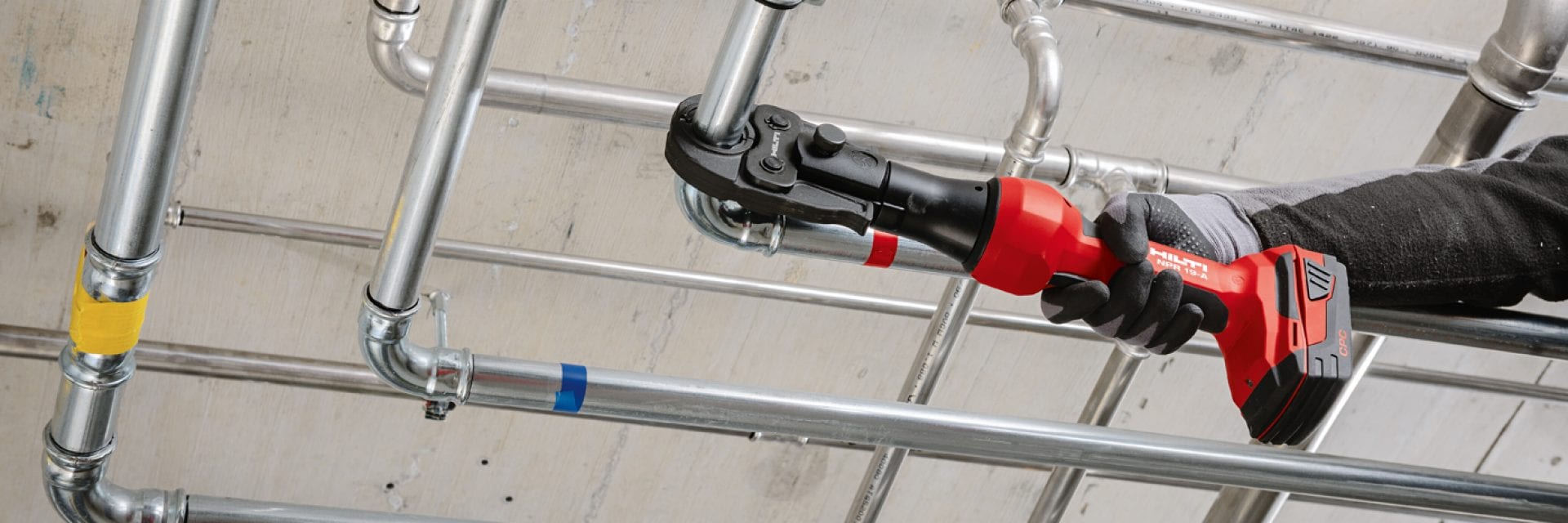Your most-asked pipe press questions
Q&A with Cordless Product Manager Dean Murphy

There are many different methods of fitting pipes, but at Hilti, we're seeing more and more customers using press fittings as their go-to method.
Existing methods such as threading, welding or soldering can be time-consuming and require specific skills. With press fittings, customers can fit two pipes together using a hydraulic tool and jaw in seconds, making it a quick and safe process.
Combine those benefits with Hilti Connect (our in-built technology that checks the service history of the tool and jaws) and you can manage your press tools and pipe connection work in a productive and efficient way.
Our range of press tools and jaws can press up to 108mm pipes, covering a wide range of pipe pressing applications. Since we launched the tool, we’ve had lots of questions about the pipe press process, the press jaws and the tool itself.
So, we’ve roped in our Cordless Product Manager, Dean Murphy, to answer your most-asked questions.
What do our customers say?

Other Blogs You May Be Interested In
Share
